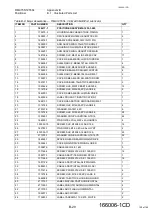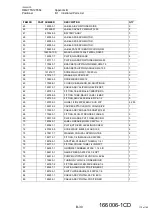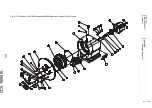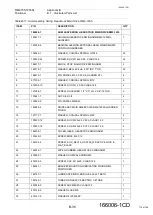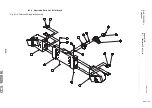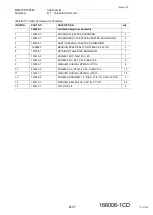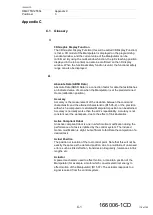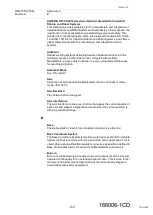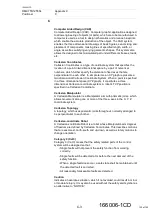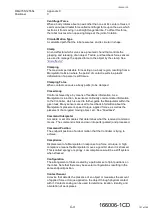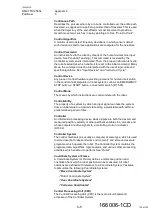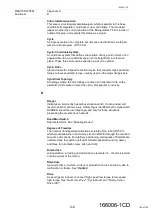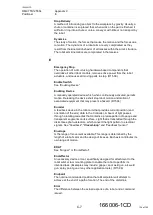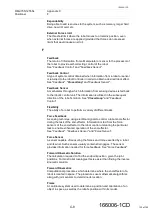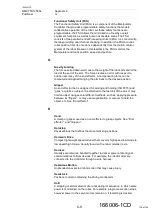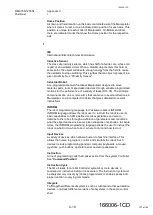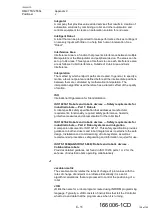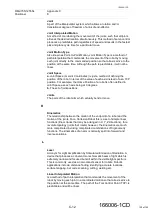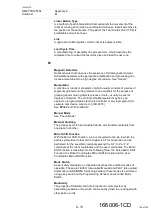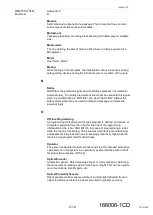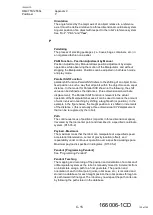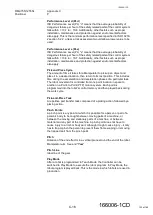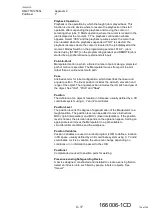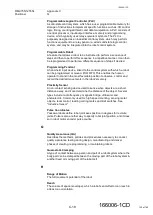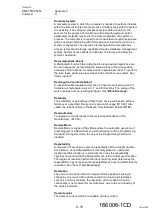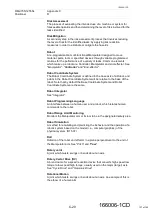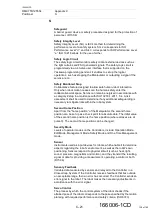
C-6
166006-1CD
166006-1CD
Appendix C
D
RM2-755/1255SL
Positioner
Cubic Interference Area
This area is a rectangular parallelepiped, which is parallel to the base
coordinate, Manipulator coordinate or user coordinate. The Controller
judges whether the current position of the Manipulator’s TCP is inside or
outside this area, and outputs this status as a signal.
Cycle
A single execution of a complete set of moves and functions contained
within a robot program. (R15.05-2)
Cyclic Coordinate System
A coordinate system that defines the position of any point in terms of an
angular dimension, a radial dimension and a height from a reference
plane. These three dimensions specify a point on a cylinder.
Cyclo Drive
A brand name for a speed reduction device that converts high speed low
torque to low speed high torque, usually used on the major (larger) axis.
Cylindrical Topology
A topology where the arm follows a radius of a horizontal circle, with a
prismatic joint to raise or lower the circle. Not popular in industry.
D
Danger
Indicates an imminently hazardous situation which, if not avoided, will
result in death or serious injury. Safety Signs identified by the signal word
DANGER should be used sparingly and only for those situations
presenting the most serious hazards.
Dead Man Switch
.
Degrees of Freedom
The number of independent directions or joints of the robot (R15.07),
which would allow the robot to move its end effector through the required
sequence of motions. For arbitrary positioning, six degrees of freedom are
needed: three for position (left-right, forward-backward and up- down),
and three for orientation (yaw, pitch and roll).
Direct-drive
Joint actuation, including no transmission elements (i.e., the link is bolted
onto the output of the motor.)
Downtime
A period of time, in which, a robot or production line is shut down, due to
malfunction or failure. See
.
Drive
A speed (gear) reducer to convert high speed low torque to low speed
high torque. See
,
123 of 145

